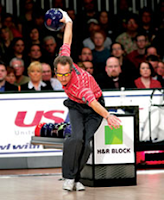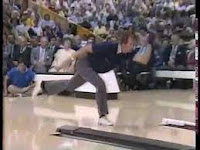July 12, 2021
Yesterday marked the first successful trip to the edge of space and beyond by billionaire entrepreneurs who seek to make human spaceflight more routine. A small rocket plane operated by Virgin Galactic, which Sir Richard Branson founded in 2004, carried him and five other people to the edge of space and back. The Unity 22 spacecraft separated from the mother ship and rocketed above the 50 mile NASA-designated boundary into outer space (they reached 53.5 miles). The six people, now officially designated “astronauts,” were weightless for about four minutes, floating above their seats. Unity then returned to the ground, landing like the Space Shuttle, and traditional aircraft. Jeff Bezos will be the next billionaire in space, flying on July 20, the anniversary of the Apollo 11 moon landing. Bezos, and three others, will launch and return in New Shepard, a conventional rocket.
This first video shows Unity's separation, feathering (flipping over while weightless) and landing.
The second video shows Branson and his crew weightless in space.
👉 Today we begin a look at one of my favorite sports, bowling. Bowling has a long and rich history, and today it is one of the most popular sports in the world. A British anthropologist, Sir Flinders Petrie, discovered in the 1930’s a collection of objects in a child’s grave in Egypt that appeared to him to be used for a crude form of bowling. If he is correct, then bowling traces its ancestry to 3200 BC. A German historian, William Pehle, asserted that bowling began in his country about 300 AD. There is substantial evidence that a form of bowling was in vogue in England in 1366, when King Edward III allegedly outlawed it to keep his troops focused on archery practice.
The English, Dutch and German settlers all imported their own variations of bowling to America. The earliest mention of it in serious American literature is by Washington Irving, when Rip Van Winkle awakens to the sound of “crashing ninepins.” The first permanent American bowling location probably was for lawn bowling, in New York’s Battery area. Now the heart of the financial district, New Yorkers still call the small plot Bowling Green.
The game had its ups and downs in America. An 1841 Connecticut law made it illegal to maintain “any ninepin lanes,” probably because bowling was the object of much gambling. But the problem, of course, also evidenced its popularity. Also, many captains of industry chose to install a lane in their mansions. While it is uncertain where the tenpin game evolved, by the late 1800s it was prevalent in many states such as New York, Ohio and as far “west” as Illinois.
In 1951, a technological breakthrough set the stage for massive growth. American Machine and Foundry Company (AMF) purchased the patents to an automatic pinspotter, and by late 1952, production model pinspotters were introduced. No longer did a proprietor have to rely on “pinboys” to hand set the pins and return the balls.
Television embraced bowling in the 1950’s, and the game’s popularity grew exponentially. Coverage proliferated with shows like “Make That Spare,” “Celebrity Bowling,” and “Bowling For Dollars.” And in 1961, ABC became the first network to telecast competition of the Pro Bowlers Association. Successful promoter, agent and entrepreneur Eddie Elias founded the PBA, and with his leadership, the Pro Bowlers Tour became a hugely popular stalwart of ABC sports broadcasting.
Before we wrap this up for today (more tomorrow starting with 10-pin bowling, 9-pin bowling, candlepin bowling, duckpin bowling, and 5-pin bowling) take a look at my second favorite bowler of all time, Earl Anthony: PBA Bowler of the Year 6 times, 43 tournament victories, first bowler to win $1 million, member of the PBA Hall of Fame, and in 2008 voted the greatest bowler in the first 50 years of the PBA. The clip shows “the Doomsday Stroking Machine” winning his last tournament, the ABC Masters. Oh, my favorite bowler of all time? The man who taught me to bowl: Melvin D. Sisler, Sr.
👉 Phil Pollack and Jenn Loeb, married on May 31 of this year, went on their first date in 2017 to the Whitney Museum. Never considering themselves artists, they were fans of Rubick’s Cube, the annoying cube toy with 6 colors that must be twisted until each face is just one color. Quarantined in their apartment because of coronavirus, they discovered they could make abstract designs out of solved cubes. They ordered 60 keychain size cubes and made their first portrait which was of Supreme Court justice Ruth Bader Ginsberg. Their second portrait, posted to Instagram, was of Alex Trebek. And an art career was born. These mini-cube portraits feature 800 to 1,200 cubes. The Trebek portrait has 980 cubes and weighs 50 pounds.
👉 Enjoy these smiles:
👉 We did a 1960s TV Theme Song quiz last week, and The Bro reported in that he and CJ only missed 5 of the 40 for top prize. Here is a 1970s quiz with 28 tunes. I got 73% for the 60s for a C. I really stunk this one up with only 58%. I failed the 70s. Good luck!
👉 Our sermon today, “The Pendulum,” is from the Macedonia UMC Pulpit, preached on March 24, 2013. The text is Luke 19:28-48. My reading is from the Contemporary English Bible.
👉 Today’s close continues Psalm 119 from Praying with the Psalms, by Eugene H. Peterson.
“Teach me, O Lord, the way of your statutes; and I will observe it to the end” (Psalm 119:33).
Our thirst for knowledge and hunger for wisdom are satisfied, finally, not in the schools or universities, but in God. God teaches us our origins in his love and our destiny in his redemption. What else do we need to know?
Prayer: “Savior, teach me, day by day, love’s sweet lesson, to obey; sweeter lesson cannot be, loving Him who first loved me ... Teach me thus Thy steps to trace, strong to follow in thy grace, learning how to love from Thee, loving Him who first loved me” (Jane Leeson, “Savior, Teach Me Day by Day”). Amen.
-30-










No comments:
Post a Comment